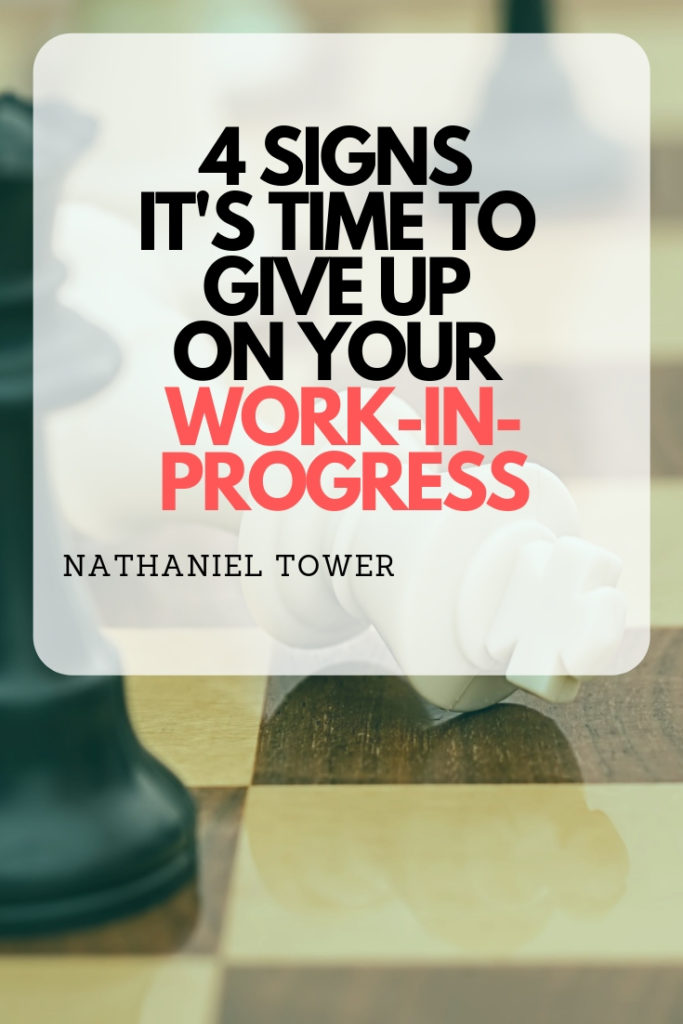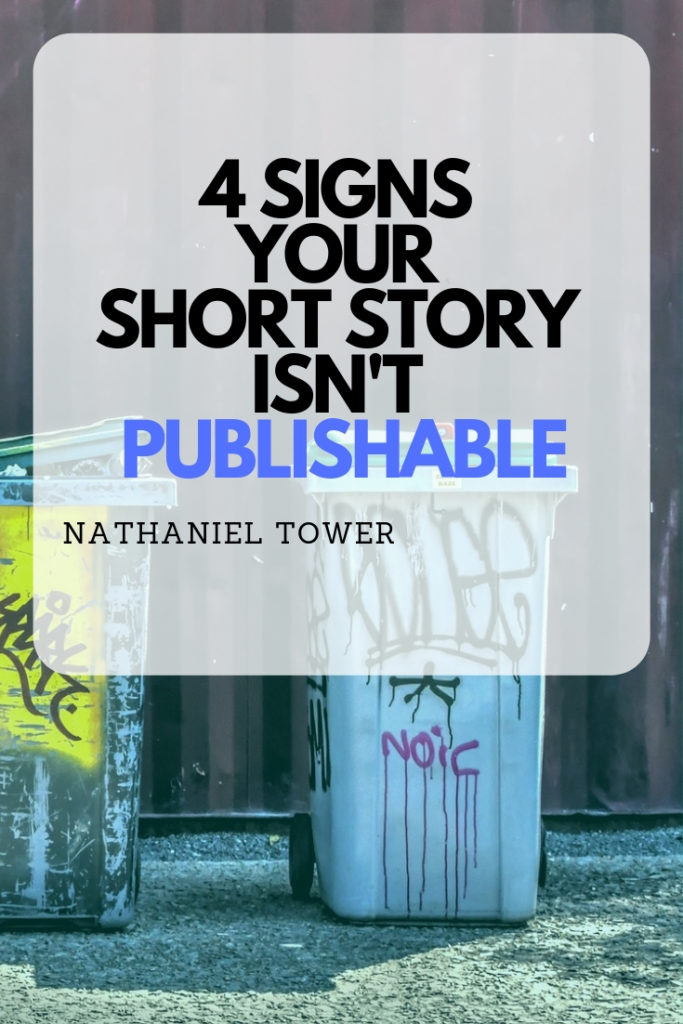Last Updated on July 6, 2020 by Nathaniel Tower
Writers have to be resilient. With as often as we get rejected and as much as we face obstacles like writer’s block, we have to pick ourselves up off the floor and get back behind the keyboard all the time. However, we also sometimes have to throw in the proverbial towel.
As someone who once had a story accepted for publication after having it rejected over fifty times, it may seem like I would never give up on a story. However, I have a folder on my computer overflowing with abandoned and hopeless pieces of writing.
Given most publications reject many more pieces than they accept, and some publications have an acceptance percentage that’s damn near zero, it shouldn’t come as a surprise most stories get rejected before they find a home. But how many rejections is too many? When is it safe to give up on a piece for good?
On principle, it’s a great idea to revisit a piece any time it’s rejected, but it’s simply not feasible most of the time. If I get personal feedback, then I always go back over the story with the editor’s comments in mind. If I just get a note that says “this wasn’t right for us,” how am I supposed to know what to look for when I read my story over for the thirty-third time? If enough editors tell me my story sucks, I might give up on it. But if I get a bunch of form rejections with no feedback one way or the other, how am I supposed to know if it’s worth saving?
There’s no set number of rejections we must encounter before a piece is rendered unsalvageable. While it certainly can be deflating to have the same story rejected dozens of times, giving up on a piece is much deeper than mere rejection.
There’s no single gauge that clearly identifies a story as useless. The subjectivity of the whole writing game doesn’t allow for it. However, here are four signs it might be time to give up on a piece.

You Don’t Want to Read It Again
I know it can be hard to reread our own stuff over and over, but it’s something we have to do. There are stories I’ve written that I really enjoy reading again no matter how many times I’ve already read them. On the flip side, there are stories I’ve written that I can’t read past the first sentence. If you go to read a story and find you just can’t get through it, then give it a break. Try it again after a few days. If you still can’t bear to read it over, then it’s probably time to trash that story.
You Can’t Ever Finish Writing the Story
I don’t mean the story keeps going and going and going with no end in sight. I mean you can’t continue what you’ve already written to make the story get to an ending. Keep track of how many times you open a file to write the story. If you find the story going nowhere, or you find yourself repeatedly opening the file and closing it without making any changes, then it’s probably time to move onto something else.
You Look for the Magazines with the Highest Acceptance Rates (and still get rejected)
Just because a magazine has a high acceptance rate doesn’t mean it’s bad. Some of my favorite magazines have unheard of acceptance rates. But part of this is due to the fact that they get sent a lot of quality work from writers in a close-knit community. Now, if you are specifically looking for a magazine with a really high acceptance rate just to try to get an oft-rejected piece published, then that’s a sign you should retire the piece. If you have no confidence in it, why do you even want to share it with others? Of course, if you do send it to one of these magazines and it still gets rejected, then you definitely know it’s time to stick that story in the old hopeless folder.
You’ve Revised It a Hundred Times and Still Don’t Like It
Every good story has to be revised. Most good stories are probably revised a dozen times before publication. But if you find yourself making major editorial overhauls every time you read over a piece, then maybe that’s a sign this story just isn’t working for you. It could be you’re a perfectionist, or maybe this is really your life’s work and you want to master it before sharing the masterpiece. Chances are though, if your editing habits for one story in particular are vastly different than your typical editing process, then that story has likely eluded you and belongs in the trash bin. That doesn’t mean your efforts were wasted. Anything you write helps you become a better writer.
Bonus Reason: You’re Embarrassed to Submit It or Share It with Friends
This one is a bit of a no-brainer. If you don’t even want to share the story, then chances are it’s time to abandon it. Unless of course it is something so deeply personal you just don’t want it to see the light of day while you’re still alive. But given the public world we live in, that isn’t likely.
When it all comes down to it, there’s no single way to determine if a piece is ready to hibernate for good. The only way to truly know it’s time to give up on a story is when it feels like it’s time to give up on a story. Most of the stories I’ve given up on are ones I never finished. If I open a document twelve times and find myself unable to edit or add anything worthwhile, then I know exactly where to drag that file.
But the files are always worth keeping. We can always go back through the folder and look at some of those old abandoned pieces to try to learn something about ourselves. And who knows. Maybe someday you’ll open one of those files and find yourself finishing a masterpiece.
How do you know when to give up on a piece of writing? Share your thoughts in the comments.



Excellent blog post. I needed to read this. Thank you so much!
Great post! It’s hard to know when to retire a piece, especially when that feeling gnaws at you that something’s not quite right about it. My train of thought on this subject led me in the direction of hit rates. I now believe my own hit rate is lower than most publication’s acceptance ratios!
I’m not sure I ever really give up on a story. I’ve had some floating around for years before finding homes, but even those that I no longer submit hang around in my mind and nag at me. Sometimes they end up as parts of other stories — they “failed” originally because they weren’t sufficient on their own, but I didn’t realize it at the time. Other times I have a revelation that gives the old story new life and I write it better. Some, of course, languish and may never be “finished,” but they are still in my head.
As for acceptance rates as a guide, I don’t put much credence in those numbers. If magazine X has 10,000 submissions for one opening, of course their acceptance ratio is going to look impossible. Most of those 10,000, though, were likely misdirected, vanity efforts, and the ratio of more suitable subs to acceptance would be a more realistic guide, if such a thing could be calculated. Similarly, a mag that has a higher acceptance ratio may not be an indication of standards low enuf to take a bad bit of writing. It may be any number of other factors: new publication, more targeted submissions, more openings in its roster. And if the editor likes the story enuf to accept it, then the story found its home.
Excellent insight, Paul! I think that a big part of writing is never fully giving up.
It would be excellent if someone could put together a system that calculates a more accurate acceptance rate based on the information you suggest here.
This list seems to have more to do with the writer than actionable ideas to improve the work.